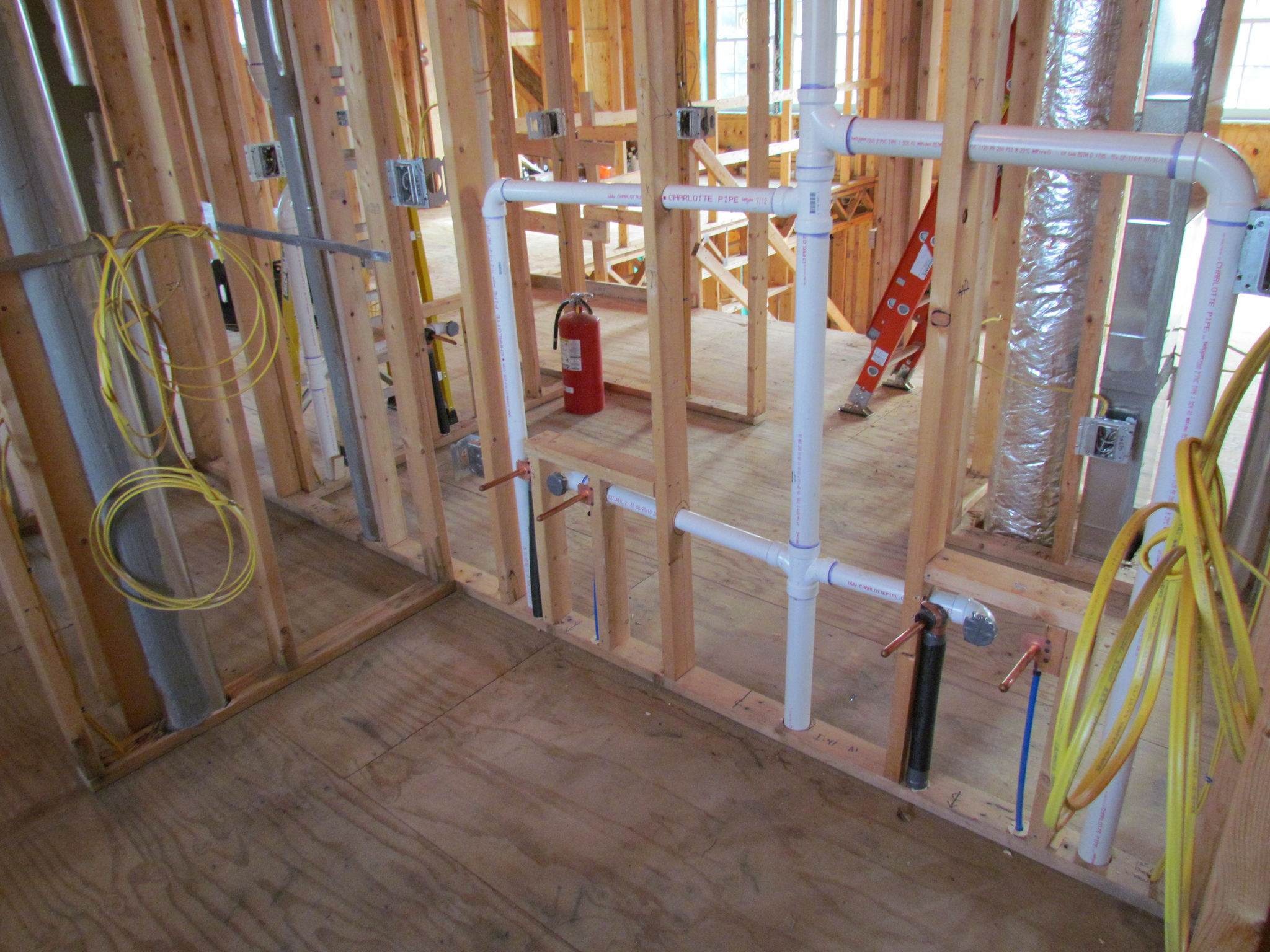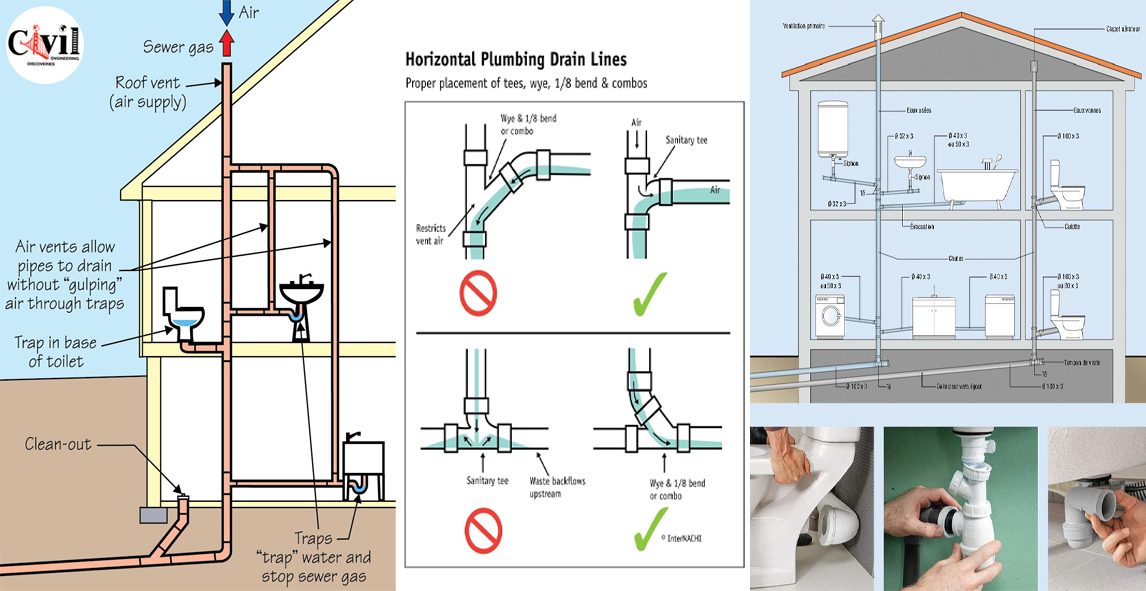On this page on the next paragraphs you can discover more helpful material concerning The Inner Workings of Your Home's Plumbing.

Understanding exactly how your home's pipes system works is crucial for every house owner. From supplying tidy water for drinking, cooking, and bathing to securely removing wastewater, a well-maintained plumbing system is vital for your family members's health and comfort. In this extensive guide, we'll check out the detailed network that makes up your home's plumbing and offer pointers on upkeep, upgrades, and managing common problems.
Intro
Your home's pipes system is more than simply a network of pipes; it's a complex system that ensures you have accessibility to tidy water and reliable wastewater removal. Knowing its components and how they collaborate can help you stop pricey repairs and guarantee everything runs smoothly.
Basic Elements of a Pipes System
Pipelines and Tubes
At the heart of your plumbing system are the pipes and tubing that bring water throughout your home. These can be constructed from various materials such as copper, PVC, or PEX, each with its advantages in terms of resilience and cost-effectiveness.
Fixtures: Sinks, Toilets, Showers, etc.
Fixtures like sinks, toilets, showers, and bathtubs are where water is used in your home. Comprehending how these fixtures connect to the pipes system assists in identifying problems and intending upgrades.
Valves and Shut-off Points
Valves manage the flow of water in your pipes system. Shut-off valves are important during emergency situations or when you require to make fixings, permitting you to separate parts of the system without interrupting water circulation to the entire residence.
Water System System
Main Water Line
The main water line connects your home to the metropolitan water system or a private well. It's where water enters your home and is dispersed to different fixtures.
Water Meter and Stress Regulator
The water meter measures your water use, while a pressure regulator guarantees that water moves at a safe stress throughout your home's pipes system, avoiding damage to pipelines and components.
Cold Water vs. Hot Water Lines
Recognizing the distinction in between cold water lines, which supply water straight from the primary, and warm water lines, which carry heated water from the hot water heater, assists in troubleshooting and preparing for upgrades.
Drainage System
Drain Pipes Pipeline and Traps
Drain pipelines bring wastewater far from sinks, showers, and bathrooms to the sewage system or sewage-disposal tank. Catches avoid sewage system gases from entering your home and likewise catch debris that could create clogs.
Air flow Pipes
Air flow pipes permit air into the drainage system, stopping suction that can slow down drainage and trigger traps to vacant. Proper air flow is necessary for preserving the stability of your plumbing system.
Value of Proper Water Drainage
Guaranteeing proper drainage protects against backups and water damages. On a regular basis cleansing drains and keeping traps can stop costly repair services and prolong the life of your pipes system.
Water Heating Unit
Sorts Of Water Heaters
Hot water heater can be tankless or traditional tank-style. Tankless heaters warmth water on demand, while containers store warmed water for immediate use.
Just How Water Heaters Attach to the Pipes System
Comprehending just how hot water heater connect to both the cold water supply and warm water circulation lines helps in detecting issues like inadequate warm water or leaks.
Maintenance Tips for Water Heaters
On a regular basis flushing your water heater to get rid of debris, checking the temperature setups, and checking for leakages can extend its life expectancy and boost energy effectiveness.
Typical Pipes Concerns
Leakages and Their Causes
Leaks can take place as a result of maturing pipelines, loosened installations, or high water pressure. Resolving leakages quickly stops water damages and mold growth.
Blockages and Clogs
Obstructions in drains pipes and toilets are typically brought on by purging non-flushable things or a build-up of oil and hair. Using drain screens and bearing in mind what drops your drains can avoid blockages.
Indications of Pipes Troubles to Watch For
Low water pressure, sluggish drains, foul odors, or uncommonly high water bills are signs of prospective pipes problems that should be dealt with quickly.
Pipes Upkeep Tips
Routine Assessments and Checks
Set up yearly pipes examinations to capture concerns early. Look for indications of leaks, corrosion, or mineral build-up in taps and showerheads.
Do It Yourself Upkeep Tasks
Straightforward jobs like cleansing faucet aerators, checking for bathroom leaks utilizing dye tablets, or shielding revealed pipelines in cold climates can prevent significant pipes problems.
When to Call an Expert Plumbing Technician
Know when a plumbing problem calls for professional knowledge. Attempting complex repairs without correct expertise can bring about even more damages and greater fixing prices.
Updating Your Plumbing System
Reasons for Updating
Updating to water-efficient components or replacing old pipes can improve water high quality, decrease water bills, and increase the worth of your home.
Modern Pipes Technologies and Their Advantages
Discover modern technologies like smart leak detectors, water-saving toilets, and energy-efficient water heaters that can save money and reduce environmental impact.
Price Factors To Consider and ROI
Determine the in advance costs versus long-term savings when considering plumbing upgrades. Several upgrades pay for themselves through reduced utility costs and less repair services.
Ecological Effect and Conservation
Water-Saving Fixtures and Home Appliances
Setting up low-flow faucets, showerheads, and toilets can significantly lower water use without giving up efficiency.
Tips for Decreasing Water Use
Basic behaviors like taking care of leakages quickly, taking shorter showers, and running complete loads of washing and recipes can preserve water and reduced your utility bills.
Eco-Friendly Plumbing Options
Consider lasting plumbing products like bamboo for flooring, which is durable and eco-friendly, or recycled glass for kitchen counters.
Emergency situation Readiness
Steps to Take Throughout a Pipes Emergency situation
Know where your shut-off valves are located and just how to switch off the supply of water in case of a burst pipe or major leak.
Value of Having Emergency Situation Contacts Useful
Maintain call info for neighborhood plumbings or emergency situation solutions conveniently available for fast response during a pipes situation.
DIY Emergency Situation Fixes (When Relevant).
Temporary repairs like using duct tape to spot a leaking pipe or putting a pail under a trickling faucet can reduce damage till a specialist plumbing shows up.
Conclusion.
Comprehending the makeup of your home's pipes system equips you to keep it properly, conserving time and money on repair work. By adhering to normal maintenance regimens and remaining educated concerning modern-day pipes modern technologies, you can guarantee your plumbing system operates effectively for several years ahead.
HOW YOUR PLUMBING SYSTEM WORKS
Which Pipes Do What?
Blue lines = fresh water supply entering the building
Red lines = hot water supply entering the building
Grey lines = pipes carrying waste away from the building and venting pipes carrying gases away from the building (through the roof)
YOUR MAIN PLUMBING SYSTEMS
There are two main plumbing systems that support your home s basic plumbing needs one that brings clean water into your home, and one that sends dirty water away from your home. Connected to the toilet, bath, shower, and other faucets in your home, these two systems keep your water flowing in the right directions.
ACCESSING FRESH WATER
Fresh and clean water is brought into your home through the main water supply line . Filtered through one pipe, this water is pressured to flow into the various fixtures in your home at any given time.
This water can be sourced from a well located on your property, a pond or river (mostly cottages), or, as in most cases, from the city s municipal water treatment centre. However, it is important to note that water that is untreated, such as the water siphoned from ponds or rivers, may not be safe to drink. Personal water supplies always need to be treated for hardness and contaminants before consumed.
MUNICIPAL WATER SUPPLIES
Improve taste and odour
Remove sediment
Eliminate hardness
Reduce chlorine
COLD WATER SUPPLY VS. HOT WATER SUPPLY
Cold water flows into your home or building through the service line, which then distributes hot or cold water to your fixtures. This line is most commonly run through a central column that runs floor to floor. Hot water runs in short and straight pipes as the longer the pipeline, the more heat that will be lost in the transfer. Having shorter pipes also allows residents to access hot water more quickly.
WASTE WATER SYSTEM
Your wastewater system is divided into two parts pipes that send wastewater away from your home and venting pipes that send sewer gas away from your home. Sewage water travels through pipes that flush the water and waste towards local sewers that are operated and managed by your city or town. Most sewer systems rely on gravity to move the wastewater to where it needs to go.
The further away from your toilet or sink, the larger wastewater pipes become. This allows for waste to be disposed of from various parts of your home or business at once without pipe blockages. The angle and flow of these pipes are also essential for keeping your waste pipes clear of build up.
https://harrisplumbing.ca/how-your-home-plumbing-system-works/

HOW YOUR PLUMBING SYSTEM WORKS
Which Pipes Do What?
YOUR MAIN PLUMBING SYSTEMS
There are two main plumbing systems that support your home s basic plumbing needs one that brings clean water into your home, and one that sends dirty water away from your home. Connected to the toilet, bath, shower, and other faucets in your home, these two systems keep your water flowing in the right directions.
ACCESSING FRESH WATER
Fresh and clean water is brought into your home through the main water supply line . Filtered through one pipe, this water is pressured to flow into the various fixtures in your home at any given time.
This water can be sourced from a well located on your property, a pond or river (mostly cottages), or, as in most cases, from the city s municipal water treatment centre. However, it is important to note that water that is untreated, such as the water siphoned from ponds or rivers, may not be safe to drink. Personal water supplies always need to be treated for hardness and contaminants before consumed.
MUNICIPAL WATER SUPPLIES
COLD WATER SUPPLY VS. HOT WATER SUPPLY
Cold water flows into your home or building through the service line, which then distributes hot or cold water to your fixtures. This line is most commonly run through a central column that runs floor to floor. Hot water runs in short and straight pipes as the longer the pipeline, the more heat that will be lost in the transfer. Having shorter pipes also allows residents to access hot water more quickly.
WASTE WATER SYSTEM
Your wastewater system is divided into two parts pipes that send wastewater away from your home and venting pipes that send sewer gas away from your home. Sewage water travels through pipes that flush the water and waste towards local sewers that are operated and managed by your city or town. Most sewer systems rely on gravity to move the wastewater to where it needs to go.
The further away from your toilet or sink, the larger wastewater pipes become. This allows for waste to be disposed of from various parts of your home or business at once without pipe blockages. The angle and flow of these pipes are also essential for keeping your waste pipes clear of build up.
https://harrisplumbing.ca/how-your-home-plumbing-system-works/
I was shown that editorial on Understanding Your Home's Plumbing Anatomy through an associate on a different website. Loved our article? Please quickly share it. Let another person discover it. Many thanks for taking the time to read it.
Source This Article